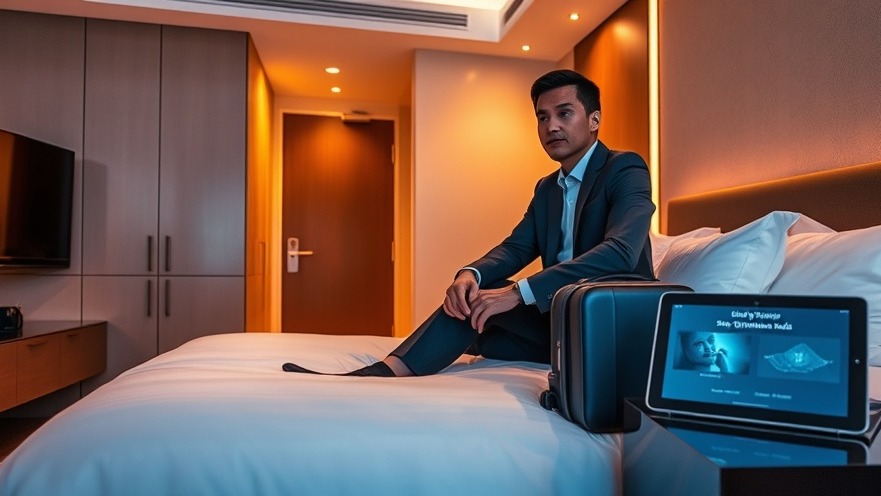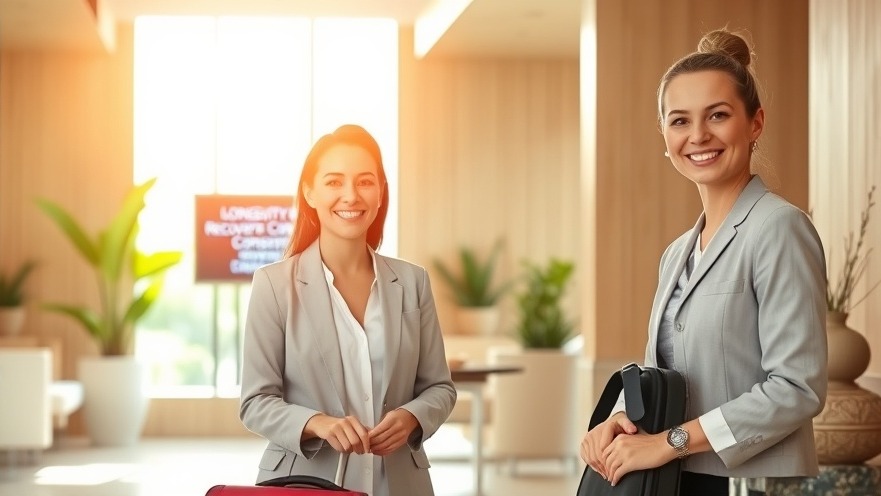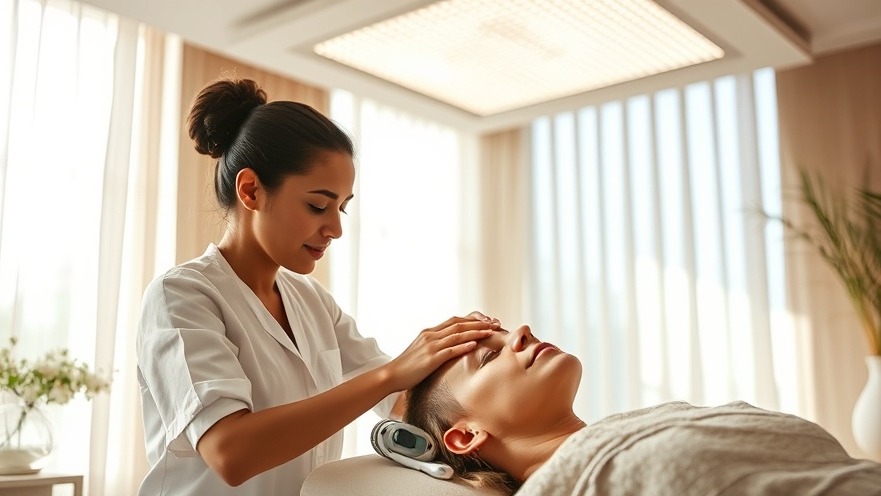
When Rest Becomes the New Status Symbol
After years of racing through airports and meetings, today’s business traveler has a new obsession—recovery.
Not the quick kind that comes from a nap between flights, but the kind you can measure: how deeply you sleep, how calm your heart rate is, and how fast your body bounces back.
At Equinox Hotel in New York City, guests can check into “Sleep Lab” rooms where light, temperature, and even scent are fine-tuned to help the body rest.
Across the ocean at Six Senses Ibiza, travelers start their spa visit with simple health checks—metabolic scans, biomarker testing, and a conversation about long-term energy and longevity.
What used to be a luxury extra is now the main attraction.
“Business travel has transformed into performance travel,” says neuroscientist Dr. Matthew Walker, who helped develop the Equinox Sleep Lab. “People don’t just want to look rested—they want to prove it.”
For spa owners and wellness directors, that’s a clear signal: the travelers who walk through your doors are arriving with data, expectations, and a hunger for results.
They still want to feel good—but they also want to perform better.
From Jet Lag to Longevity: The New Wellness Economy
A decade ago, wellness for business travelers meant a small gym and maybe a lavender pillow spray. Today, it’s part of a global wellness economy worth more than $1 trillion—an industry that blends neuroscience, technology, and holistic care.
Nearly 80 percent of corporate travelers now mix business with leisure. They extend trips, spend more, and look for experiences that help them stay sharp.
Early hotel programs tested the waters with Sleep Well menus at Westin or Headspace meditations at Hyatt. But when brands began treating recovery as a science, everything changed.
Equinox Hotels made sleep its signature feature. Partnering with Dr. Walker, the company created rooms designed for genuine rest.
“We want our guests to leave stronger, sharper, and more aligned than when they arrived,” Walker explains. “That starts with restoring sleep to its rightful place—as the foundation of health.”
Six Senses took it a step further with RoseBar Longevity, co-created with functional-medicine expert Dr. Mark Hyman. Guests can get metabolic and genetic assessments, then receive simple nutrition and movement guidance they can continue at home.
For spas, this shift means recovery has evolved from a soothing add-on to a true performance tool.

How the Wellness Bar Was Raised
For years, spas were built around ambience—soft lights, calming music, and aromatherapy. Then the pandemic reminded everyone how fragile health can be. Travelers no longer wanted escape; they wanted renewal.
By 2023, “sleep tourism” had become one of the fastest-growing travel trends. Equinox launched its Sleep Lab, while InterContinental Hotels partnered with the jet-lag app Timeshifter, created by Harvard scientist Dr. Steven Lockley, to help guests adjust to new time zones.
Meanwhile, Therabody brought its recovery devices into hotel suites—percussive guns, compression sleeves, and cold-therapy pods—so guests could treat sore muscles without leaving the room.
“Technology isn’t replacing relaxation,” says Lockley. “It’s showing people what true recovery feels like when biology and behavior work together.”
That idea—precision blended with comfort—is exactly where spas can shine.
The Science of Recovery: What Spas Can Learn
So what makes bio-optimized recovery different from traditional wellness? It’s all about precision and personalization.
1. Circadian Intelligence Light is one of the body’s strongest timekeepers. Hotels like Equinox and Six Senses use smart lighting that mimics sunrise and sunset, reminding the brain when to rest or wake. Spas can borrow this idea—adjusting treatment times and lighting design to fit the body’s natural rhythm.
2. Recovery Stacking Athletes combine techniques like cold plunges, infrared heat, massage, and breathwork to multiply results. Spas can do the same by offering “recovery circuits”—a sequence of complementary services that refresh both body and mind.
3. Data-Driven Personalization Apps and wearables such as Timeshifter and Oura Ring have taught guests to pay attention to sleep and heart-rate recovery. Spas can use simple intake questions or optional device syncing to customize experiences based on a guest’s real needs.
4. Longevity and Metabolism
Centers like SHA Wellness and RoseBar Longevity rely on gentle diagnostics to shape each guest’s plan. Most spas don’t need lab equipment to follow their lead—they can partner with nutritionists or integrative clinics for educational add-ons or retreats.
“We’re moving from luxury wellness to evidence-based wellness,” says Dr. Hyman. “The future spa will merge diagnostics with deep, sensory healing.”

The Spa Advantage: Human Touch Meets High-Tech Healing
Even with AI beds and smart-lighting apps, technology can’t replace what spas already do best—human connection. The real advantage lies in combining data with empathy.
Where hotels rely on algorithms, spas rely on awareness: noticing tension, reading energy, and creating calm. In a world that tracks everything, genuine care still stands out.
To merge the two worlds, consider:
Create signature “recovery journeys.” Instead of listing services, design experiences such as Circadian Reset, Jet Lag Reboot, or Deep Sleep Ritual that combine multiple elements.
Collaborate with tech brands. Partner with Therabody, Oura, or Timeshifter for credibility and cross-promotion.
Train for wellness literacy. Help your team understand simple recovery science—circadian rhythms, breathing techniques, and metabolic health.
Redefine luxury. Guests now value meaningful results more than marble floors. Offer transformation they can actually feel.
Practical Takeaways for Spa Leaders
Fine-tune your space: Light, temperature, and sound directly affect how guests feel. Design every element to relax the nervous system.
Add small recovery tools: Infrared panels, compression boots, or guided breathing technology make easy upgrades to any treatment room.
Offer measurable experiences: Provide optional sleep or stress tracking for loyal members—proof of progress builds long-term trust.
Build partnerships: Connect with local longevity or nutrition experts to expand your offerings without heavy investment.
Market results, not routines: Replace phrases like “stress relief” with “energy recovery,” “sleep enhancement,” or “circadian reset.” Those speak to modern travelers.
“Spas that blend intuition with instrumentation will define the next era of wellness,” says consultant Elena Morrow. “It’s not about losing the soul of the spa—it’s about expanding it.”
Recharging the Spa Industry—One Recovery at a Time
The rise of bio-optimized recovery isn’t just another hospitality trend—it’s a new standard of wellness. Guests now expect their bodies and minds to be recharged as precisely as their phones.
From AI-guided sleep environments to gentle diagnostic tools, the message is simple: wellness is measurable, and results matter.
For spa professionals, the path forward is to blend heart and science—to combine nurturing touch with small, smart innovations that help guests feel and perform their best. Whether you introduce a circadian-based service, create a mini recovery lounge, or simply teach clients a few self-care techniques for travel days, every effort keeps your business ahead of the curve.
“We’ve optimized everything else in our lives—our schedules, our devices, our diets,” Dr. Walker reminds us. “It’s time we optimize recovery itself.”
Quick Takeaways
Lead with science-backed recovery, not routine relaxation.
Speak the language of results—sleep, focus, energy, longevity.
Collaborate with wellness tech brands to add authority.
Track impact so guests can see the difference.
Keep the human heartbeat at the center of every experience.
For the next generation of spa leaders, this is more than a market shift—it’s an invitation.
Become the destination where recovery meets renewal. Because in a world that never stops, true rest might just be the most luxurious service of all.
Explore deeper analysis on spa business trends, treatment evolution, and market shifts in the Industry Trends category, or visit Spa Front News for more industry intelligence and wellness inspiration.
—
Authored by the Spa Front News Editorial Team — a publication of DSA Digital Media, dedicated to elevating the spa industry with expert insights, treatment breakthroughs, and destination features for spa owners, managers, and wellness leaders.
 Add Row
Add Row  Add
Add 




Write A Comment